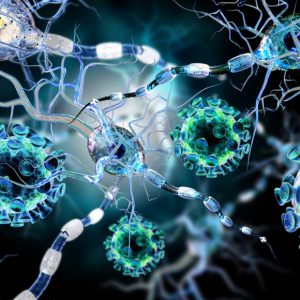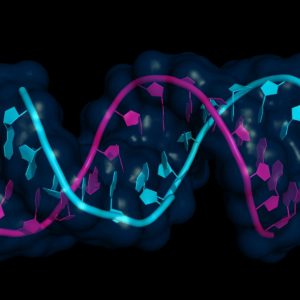Cellular differences in gene expression could provide therapeutic target for Alzheimer’s disease

Alzheimer’s disease is known to have a strong genetic component, new research into gene expression in different cell types could give more information as to why this is the case.
Despite being one of the most widely-studied neurological disorders, the true cause of Alzheimer’s disease (AD) remains a mystery. With many hypotheses flying around, there are various factors that are believed to contribute to the formation of the disease. However, the causal link is yet to be determined; whether it is due to amyloid plaques, neurofibrillary tangles or oral bacteria, this unanswered question may be what is holding back the development of a cure.
The genetic effect
One undeniable factor is the involvement of genetics which, if not causal, certainly has a strong influence as a risk factor. In the past few years, over 30 different loci have been associated with AD based on genome-wide association studies and whole genome sequencing [1]. As an example, the presence of the APOE e4 allele has been routinely demonstrated to increase the risk of developing late onset AD. With more than half of AD patients having at least one e4 allele, attention has turned to genetic factors in pursuit of a potential cure and further understanding of the disease [2].
The ongoing International Genomics of Alzheimer’s Disease Project (IGAP) has been focused on understanding the genetics behind AD and, since its launch in 2011, has performed GWAS studies to evaluate and identify key risk loci that contribute to the development of the disease. With an end goal of creating data from over 40,000 individuals with AD, the IGAP has already identified five new genetic variants that are associated with AD and confirmed the effect of 20 additional known loci [3, 4].
-
Linking viruses and Alzheimer’s disease
-
Predict the future before you forget the past
-
Tasting the rainbow could protect against dementia
The importance of expression
However, knowing the presence of genes is not enough to give an overview of the disorder. Investigating how the genes are expressed and how such expression can vary between cell types is vital for gaining a more comprehensive insight into the disease. Past studies have investigated the gene expression profile of the brain of an Alzheimer’s patient, with each additional study increasing understanding of how the affected brains differ.
A study from 2012 showed that in the brain’s microvessels alone, there can be up to 2000 genes with altered expression in the brains of AD patients. This change in the cerebromicrovasculature then has secondary influences on pathways involved in the immune and inflammatory responses [5]. Further studies have gone deeper into the gene expression profile of the disorder, demonstrating the key genes and miRNA-mRNA interactions that are involved in the pathways of Alzheimer’s [6].
“This study provides, in my view, the very first map for going after all of the molecular processes that are altered in Alzheimer’s disease in every single cell type that we can now reliably characterize. It opens up a completely new era for understanding Alzheimer’s.”
Differences in expression
Now, in the most comprehensive genetic analysis to date, researchers from the Massachusetts Institute of Technology (MA, USA) have identified each of the genes expressed in individual brain cells of patients with AD, allowing them to determine the distinctive cellular pathways that are disturbed in each neuron or glial cell.
By performing single-cell analysis on around 8000 cells taken from 48 post-mortem human brains, half with distinctive AD pathology and half with no signs of the disease, the researchers were able to analyze all cell types and differentiate between them, showing the distinct gene expression differences that can occur in the disease [7].
“This study provides, in my view, the very first map for going after all of the molecular processes that are altered in Alzheimer’s disease in every single cell type that we can now reliably characterize,” commented study author Manolis Kellis. “It opens up a completely new era for understanding Alzheimer’s” [8].

As with many neurogenerative disorders, neuron degeneration is a key factor in the progression of the disorder. In support of this, the researchers found that there is a significant change in the genes associated with axon regeneration and myelination [9]. Genes related to myelin, a fatty sheath that provides insulation for the axons of neurons, were shown to be particularly affected, both in neurons and in oligodendrocytes, the cells responsible for producing the insulating layer. Without the protection of myelin, neurons lose the ability to perform saltatory conduction and the speed at which the action potential spreads is reduced.
The cell specific changes found were mainly observed early in the development of the disease. In later stages of the disease, all of the brain cells were found to have turned up genes related to stress response, programed apoptosis and the cellular machinery necessary for maintaining the integrity of proteins. Correlations were also found between gene expression profiles and secondary measures of AD severity, such as the level of Alzheimer’s neuropathology or cognitive impairments which allowed for the pairing up of “modules” of genes and aspects of the disease [9].
A surprising finding was the stark difference between the cells of male and female AD patients’ brains. Despite showing similar pathological and cognitive symptoms, male patients were found to have less pronounced gene expression changes in their excitatory neurons than female patients who, in comparison, had an expanded set of altered cellular pathways. A difference was also found in the oligodendrocytes, further influencing myelin production, and female patients were found to have greater white matter damage than male patients with matched cognitive decline.
 “There is mounting clinical and preclinical evidence of a sexual dimorphism in Alzheimer’s predisposition, but no underlying mechanisms are known. Our work points to differential cellular processes involving non-neuronal myelinating cells as potentially having a role. It will be key to figure out whether these discrepancies protect or damage the brain cells only in one of the sexes — and how to balance the response in the desired direction on the other,” added lead author Jose Davila-Velderrain [8].
“There is mounting clinical and preclinical evidence of a sexual dimorphism in Alzheimer’s predisposition, but no underlying mechanisms are known. Our work points to differential cellular processes involving non-neuronal myelinating cells as potentially having a role. It will be key to figure out whether these discrepancies protect or damage the brain cells only in one of the sexes — and how to balance the response in the desired direction on the other,” added lead author Jose Davila-Velderrain [8].
Building up a profile for gene expression in Alzheimer’s may not only help to increase understanding of the disease itself but also assist in offering potential new drug targets and therapeutic options. In a disease where treatments are so lacking, this increase in data could be vital in finding a therapy, if not a cure. As with personalized therapies in other areas of medicine, a genetic understanding of the individual as well as the disease could lead to better, more effective treatments tailored to the patient.





